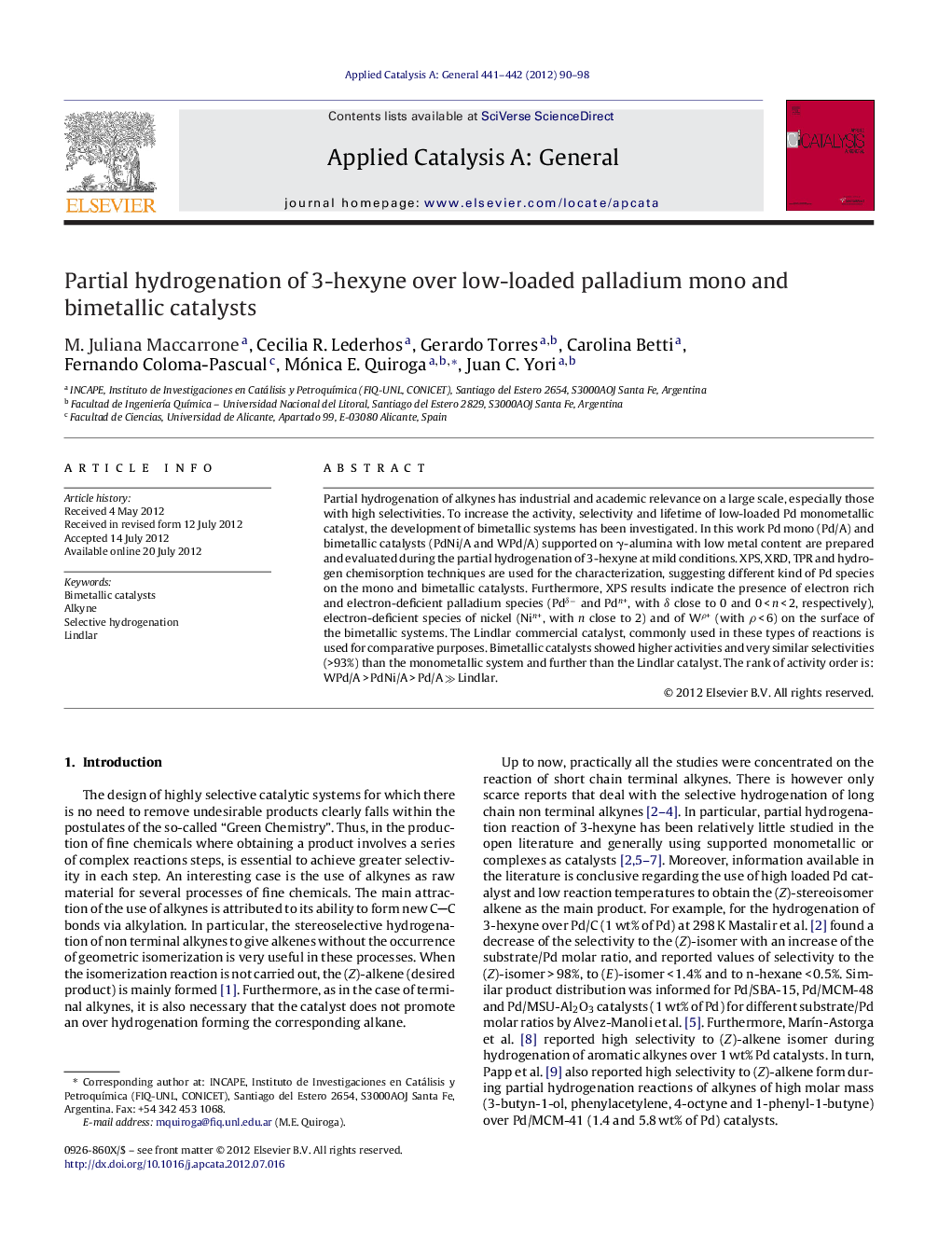| Article ID | Journal | Published Year | Pages | File Type |
|---|---|---|---|---|
| 40777 | Applied Catalysis A: General | 2012 | 9 Pages |
Partial hydrogenation of alkynes has industrial and academic relevance on a large scale, especially those with high selectivities. To increase the activity, selectivity and lifetime of low-loaded Pd monometallic catalyst, the development of bimetallic systems has been investigated. In this work Pd mono (Pd/A) and bimetallic catalysts (PdNi/A and WPd/A) supported on γ-alumina with low metal content are prepared and evaluated during the partial hydrogenation of 3-hexyne at mild conditions. XPS, XRD, TPR and hydrogen chemisorption techniques are used for the characterization, suggesting different kind of Pd species on the mono and bimetallic catalysts. Furthermore, XPS results indicate the presence of electron rich and electron-deficient palladium species (Pdδ− and Pdn+, with δ close to 0 and 0 < n < 2, respectively), electron-deficient species of nickel (Nin+, with n close to 2) and of Wρ+ (with ρ < 6) on the surface of the bimetallic systems. The Lindlar commercial catalyst, commonly used in these types of reactions is used for comparative purposes. Bimetallic catalysts showed higher activities and very similar selectivities (>93%) than the monometallic system and further than the Lindlar catalyst. The rank of activity order is: WPd/A > PdNi/A > Pd/A ≫ Lindlar.
Graphical abstractFigure optionsDownload full-size imageDownload high-quality image (77 K)Download as PowerPoint slideHighlights► Cheaper mono and bimetallic catalysts with low Pd, Ni and W loadings are prepared. ► Catalysts are evaluated during 3-hexyne partial hydrogenation between 273 and 323 K. ► Low-loaded palladium catalysts are highly selective to (Z)-3-hexene (>93%). ► At mild conditions, catalysts are considerably more active than Lindlar catalyst. ► Palladium electron-rich species are responsible of the higher activity.
